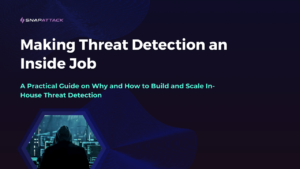What Is SOC Maturity? Why Is It Important?
The security operations center (SOC) – the beating heart of many enterprises’ / organizations’ threat management strategy – has taken on several new capabilities and technologies over the past decade or so. For a while, all teams were able to do was react to attacks as they happened – and at the time, that was enough. But adversaries got smarter, greedier, and faster, and any organization reacting to threats (instead of preparing for them) was sure to face catastrophic financial, data, and reputational loss.
So SOC teams adapted. They invested in tooling like security information and event management (SIEM) platforms to continuously monitor their networks, and threat intelligence platforms (TIPs) to more accurately predict the attacks they needed to worry about. The more prepared, robust, and resilient a SOC is depends on its people, processes, and technology – a metric measured and known as SOC maturity.
What Does a Mature SOC Look Like?
An Immature SOC | A Mature SOC |
|
|
The barriers that hold organizations back from a more mature posture are often the same ones that hold them back from advanced threat management functions, such as threat hunting. And those kinds of functions are the ones that empower mature organizations to detect more threats – more relevant threats – faster.
What Holds Organizations Back from Threat Hunting?
Threat Hunting Challenge #1: SOC Leaders Don’t Know What They Don’t Know
Many SOCs are flying blind when it comes to their detection gaps. Without a deep understanding of their threat profile, a framework like MITRE ATT&CK™ to measure their coverage, and the ability to identify gaps and prioritize threats, they’re only able to focus on the threats they do know about…versus the threats that are lurking in their network, unbeknownst to them.
Threat Hunting Challenge #2: SOC Leaders Don’t Understand Which Threats Matter
Threat Hunting Challenge #3: SOC Leaders Can’t Correlate Their Data
Threat Hunting Challenge #4: SOC Leaders Don’t Have the Resources In-House
Fortunately, there are threat hunting platforms like SnapAttack that are designed to lift the burden on under-resourced organizations that want to build out a threat hunting program.
Threat Hunting Challenge #5: SOC Leaders Don’t Have Confidence
Threat Hunting Benefits: Why Is Threat Hunting Important for SOC Maturity?
Threat Hunting Benefit #1: Gain Visibility into Your Threat Landscape
Many security teams lack visibility into their MITRE ATT&CK™ coverage and how threats map to their unique environment. They’re trying to boil the ocean when really, they need to focus on the threats that are most likely to impact their organization based on factors like:
- Industry
- Size
- Region
- Recency
- Impact
- And more.
All of this information can be wrapped up into a prioritized threat profile – but few organizations have the environmental context, tooling, or time to create or use one of those. That’s why they turn to sources like headlines and online forums to focus their efforts on the threat-of-the-week (more on this later) instead of the threats that actually pose the greatest risk to their specific organization.
Threat Hunting Benefit #2: Prevent Both Emerging and Evergreen Threats
Threat hunting gives hunters a map of any suspicious activity related to a threat so they can formulate a hunt hypothesis. The hunt hypothesis (or, less scientifically, hunch) tells them, “if any adversaries have gotten in, this is where they’ll be, and this is what their trail will look like.” They follow that hypothesis straight to, or evidence of, the threat actor at hand, if there is a threat actor to catch, in order to prevent the incident from occurring in the first place.
Threat Hunting Benefit #3: Analyze Historical Data (And the Threats You Can’t Detect)
A strategy that relies on threat detection alone, without historical analysis, might catch most bad actors on their way in – but what about those that settled in long ago, or those designed to sneak right through the gates?
Threat hunting significantly cuts down the time from intrusion to discovery because organizations are proactively searching for threats instead of waiting for them to surface. That’s the beauty of threat hunting – you’re in the driver’s seat, uncovering those threats before they beat you to the punch. Detect what you can, hunt what you can’t: it’s the approach mature organizations use to get proactive and take control of the formerly-uncontrollable adversary.
Conclusion: Striving for SOC Maturity and Threat Hunting
Much like SOC maturity, no one is questioning whether threat hunting is a good thing to do – it’s a matter of possibility. That’s why our team of former threat hunters took all of their greatest threat hunting challenges into consideration when developing SnapAttack. SnapAttack provides a structured, repeatable workflow for threat hunting and integrates across your tech stack so each hunt can be completed from one place in just a few minutes.
The SnapAttack platform is designed to help security teams at any maturity build a threat hunting program, whether they already have some of the pieces in place or need to start from the ground up. Features like built-in Threat Profiles, the Hunter’s Workbench, machine learning-driven Recommended Hunts, and automated hunts make it possible for even less mature teams to unlock the benefits of threat hunting.
For teams who want to find out where their maturity currently stands, or put their threat hunting in the hands of experts, SnapAttack offers professional services and maturity assessments in addition to our end-to-end threat hunting platform. Get in touch today.
About SnapAttack: SnapAttack is an innovator in proactive, threat-informed security solutions. The SnapAttack platform helps organizations answer their most pressing question: “Are we protected against the threats that matter?”
By rolling threat intelligence, adversary emulation, detection engineering, threat hunting, and purple teaming into a single, easy-to-use product with a no-code interface, SnapAttack enables companies to get more from their tools and more from their teams so they can finally stay ahead of the threat.




